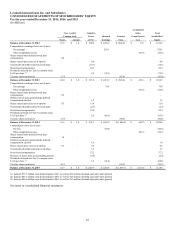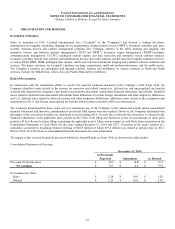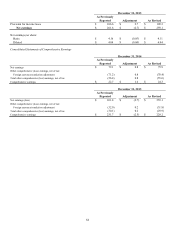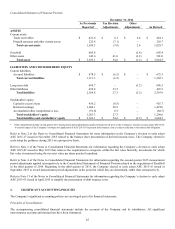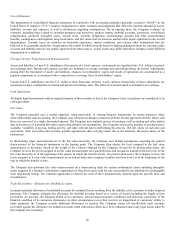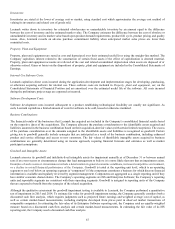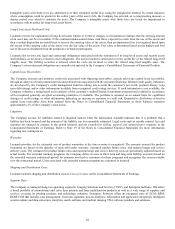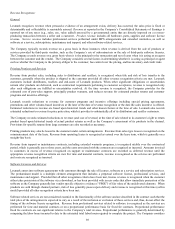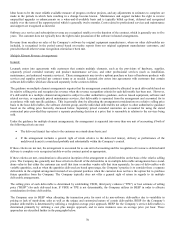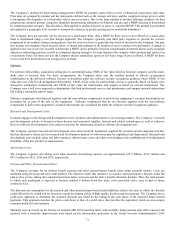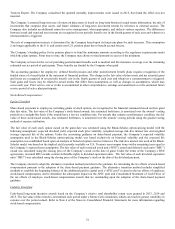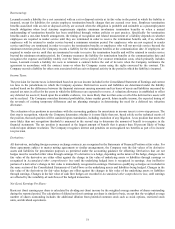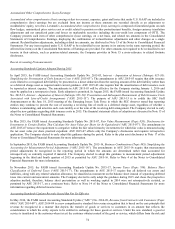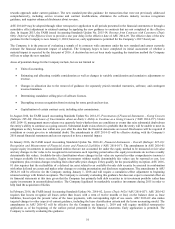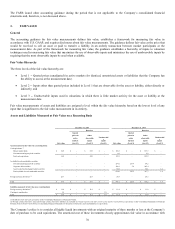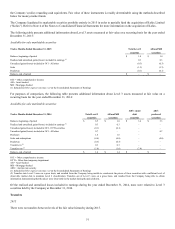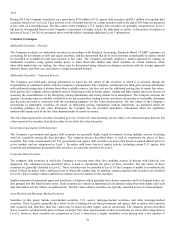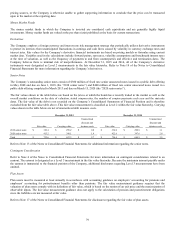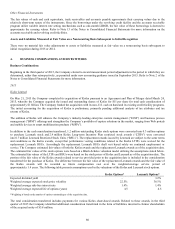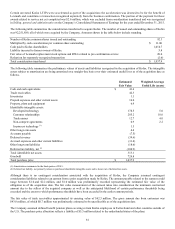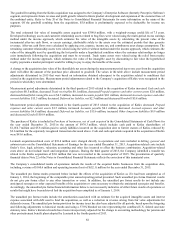Lexmark 2015 Annual Report Download - page 76
Download and view the complete annual report
Please find page 76 of the 2015 Lexmark annual report below. You can navigate through the pages in the report by either clicking on the pages listed below, or by using the keyword search tool below to find specific information within the annual report.
72
Trustees Report. The Company considered the updated mortality improvements scale issued in 2015, but found the effect was not
material.
The Company’s assumed long-term rate of return on plan assets is based on long-term historical actual return information, the mix of
investments that comprise plan assets, and future estimates of long-term investment returns by reference to external sources. The
Company also includes an additional return for active management, when appropriate, and deducts various expenses. The differences
between actual and expected asset returns are recognized in net periodic benefit cost in the fourth quarter of each year and whenever a
remeasurement is triggered.
The rate of compensation increase is determined by the Company based upon its long-term plans for such increases. This assumption
is no longer applicable to the U.S. and certain non-U.S. pension plans due to benefit accrual freezes.
The Company’s funding policy for its pension plans is to fund the minimum amounts according to the regulatory requirements under
which the plans operate. From time to time, the Company may choose to fund amounts in excess of the minimum.
The Company accrues for the cost of providing postretirement benefits such as medical and life insurance coverage over the remaining
estimated service period of participants. These benefits are funded by the Company when paid.
The accounting guidance for employers’ defined benefit pension and other postretirement benefit plans requires recognition of the
funded status of a benefit plan in the statement of financial position. The change in the fair value of plan assets and net actuarial gains
and losses are recognized in net periodic benefit cost in the fourth quarter of each year and whenever a remeasurement is triggered.
Such gains and losses may be related to actual results that differ from assumptions as well as changes in assumptions, which may
occur each year. Prior service cost or credit is accumulated in other comprehensive earnings and amortized over the estimated future
service period of active plan participants.
Stock-Based Compensation:
Equity Classified
Share-based payments to employees, including grants of stock options, are recognized in the financial statements based on their grant
date fair value. The fair value of the Company’s stock-based awards, less estimated forfeitures, is amortized over the awards’ vesting
periods on a straight-line basis if the awards have a service condition only. For awards that contain a performance condition, the fair
value of these stock-based awards, less estimated forfeitures, is amortized over the awards’ vesting periods using the graded vesting
method of expense attribution.
The fair value of each stock option award on the grant date was estimated using the Black-Scholes option-pricing model with the
following assumptions: expected dividend yield, expected stock price volatility, weighted average risk-free interest rate and weighted
average expected life of the options. Under the accounting guidance on share-based payment, the Company’s expected volatility
assumption used in the Black-Scholes option-pricing model was based exclusively on historical volatility and the expected life
assumption was established based upon an analysis of historical option exercise behavior. The risk-free interest rate used in the Black-
Scholes model was based on the implied yield currently available on U.S. Treasury zero-coupon issues with a remaining term equal to
the Company’s expected term assumption. The fair value of each restricted stock unit (“RSU”) award and deferred stock unit (“DSU”)
award was calculated using the closing price of the Company’s stock on the date of grant. Under the terms of the Company’s RSU
agreements, unvested RSU awards contain forfeitable rights to dividend equivalent units. The fair value of each dividend equivalent
unit (“DEU”) was calculated using the closing price of the Company’s stock on the date of the dividend payment.
The Company elected to adopt the alternative transition method provided in the guidance for calculating the tax effects of stock-based
compensation pursuant to the adoption of the share-based payment guidance. The alternative transition method includes simplified
methods to establish the beginning balance of the additional paid-in capital pool (“APIC pool”) related to the tax effects of employee
stock-based compensation, and to determine the subsequent impact on the APIC pool and Consolidated Statement of Cash Flows of
the tax effects of employee stock-based compensation awards that are outstanding upon the adoption of the share-based payment
guidance.
Liability Classified
Cash-based long-term incentive awards based on the Company’s relative total shareholder return were granted in 2013, 2014 and
2015. The fair value of the awards is determined each period under a Monte Carlo simulation, which can result in greater variability in
expense over the period earned. Refer to Note 6 of the Notes to Consolidated Financial Statements for more information regarding
stock-based compensation.


